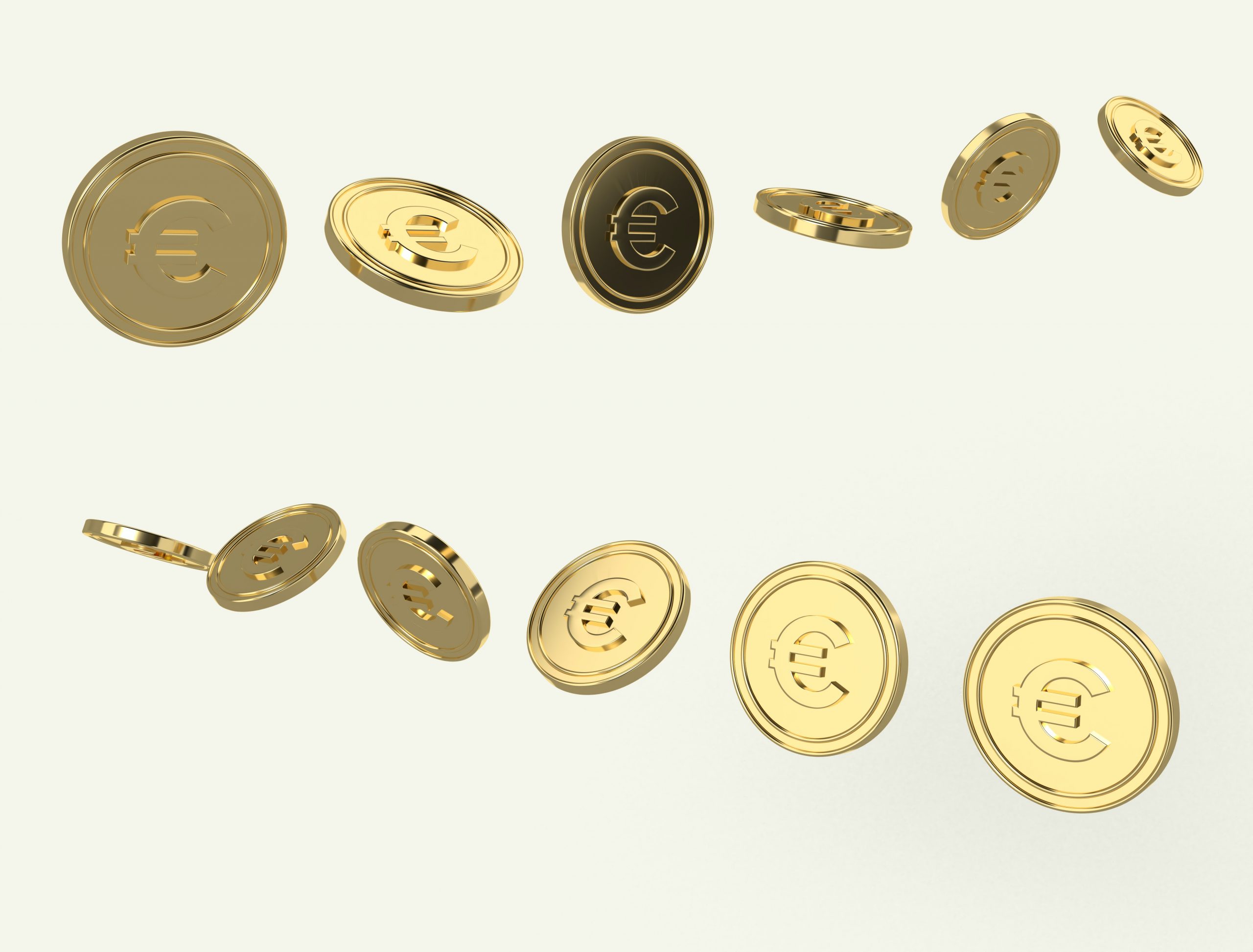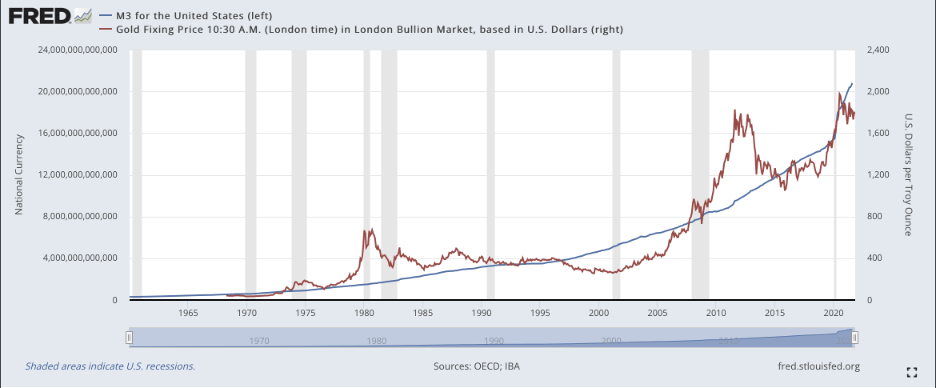When it comes to investing in gold, it’s crucial to understand the difference between intrinsic and perceived value. As an experienced investor, you know that gold is often seen as a safe haven during uncertain times, but what exactly makes it so valuable? In this article, we will delve into the psychology behind gold investments, exploring the factors that contribute to its intrinsic value and how it is perceived in the investment world. By gaining a deeper understanding of these concepts, you’ll be better equipped to make informed investment decisions and navigate the fluctuations of the gold market.

This image is property of images.unsplash.com.
What is Intrinsic Value?
Definition of intrinsic value
Intrinsic value refers to the inherent worth or value that an asset possesses, based on its fundamental characteristics and qualities. When determining the intrinsic value of an asset, such as gold, investors look beyond its market price and instead focus on factors such as its scarcity, usefulness, and historical significance. In the context of gold, intrinsic value is derived from its physical properties, including its durability, resistance to corrosion, and conductivity. Furthermore, gold’s limited supply and its role as a safe haven asset contribute to its intrinsic value.
Factors that determine gold’s intrinsic value
Several factors contribute to determining gold’s intrinsic value. First and foremost, the scarcity of gold plays a significant role. Gold is a finite resource, and its limited supply adds to its intrinsic value. Additionally, gold’s historical significance as a form of currency and its use in various industries, such as jewelry and electronics, contribute to its intrinsic value. Furthermore, gold’s physical properties, including its density, malleability, and ability to conduct heat and electricity, make it a valuable and sought-after asset.
Historical significance of gold’s intrinsic value
Gold’s intrinsic value can be traced back to ancient civilizations, where it was used as a form of currency and a store of value. Throughout history, gold has been regarded as a symbol of wealth, power, and prestige. The recognition of gold’s intrinsic value has transcended time and cultures, with civilizations across the globe recognizing its worth. This historical significance has solidified gold’s position as a long-standing and trusted asset, further contributing to its intrinsic value.
What is Perceived Value?
Definition of perceived value
Perceived value refers to the subjective worth or value assigned to an asset based on individuals’ beliefs, opinions, and expectations. Unlike intrinsic value, perceived value is influenced by factors such as market sentiment, investor psychology, and external influences. In the context of gold, perceived value can be influenced by factors like market trends, economic conditions, and geopolitical events. It is important to note that perceived value may vary among different individuals or groups, as it is subjective in nature.
Factors that influence gold’s perceived value
Gold’s perceived value can be influenced by a range of factors. Market trends and movements, such as price fluctuations and investor sentiment, can greatly impact how gold is perceived. Economic conditions, including inflation, interest rates, and geopolitical uncertainties, also play a role in shaping gold’s perceived value. Furthermore, external events and news, such as global conflicts or economic crises, can spark changes in perceived value. These external influences can create both positive and negative perceptions of gold as an investment asset.
Role of market sentiment in determining perceived value
Market sentiment, driven by the collective attitudes and emotions of investors, plays a crucial role in determining gold’s perceived value. Positive market sentiment, characterized by optimism and confidence, can lead to higher perceived value for gold. Conversely, negative market sentiment, marked by fear or uncertainty, can result in lower perceived value. The ebb and flow of market sentiment, influenced by factors like economic indicators and investor psychology, can significantly impact gold’s perceived value and subsequent investment decisions.

This image is property of images.unsplash.com.
Comparison between Intrinsic and Perceived Value
Key differences between intrinsic and perceived value
The key difference between intrinsic and perceived value lies in their sources and determinants. Intrinsic value is derived from a set of objective factors, such as an asset’s fundamental characteristics and historical significance. On the other hand, perceived value is subjective and influenced by market sentiment, investor psychology, and external factors. Intrinsic value is based on the inherent qualities and attributes of an asset, while perceived value is shaped by individual beliefs, opinions, and expectations.
Importance of understanding both concepts
Understanding both intrinsic and perceived value is crucial for making informed investment decisions, especially when it comes to gold. While intrinsic value provides a foundation for assessing an asset’s worth based on its inherent qualities, perceived value reflects the market’s current sentiment and expectations. By considering both concepts, investors can gain a comprehensive understanding of an asset’s value and make more informed decisions based on a combination of objective and subjective factors.
How intrinsic and perceived value impact gold investments
Both intrinsic and perceived value play significant roles in shaping gold investments. Intrinsic value provides a long-term perspective, considering factors such as scarcity and historical significance. Investors who focus on intrinsic value may see gold as a store of wealth and a hedge against economic uncertainties. Perceived value, influenced by market sentiment and external influences, can lead to short-term fluctuations in gold prices. Investors relying on perceived value may aim to capitalize on market trends and sentiment to generate short-term gains. It is important to strike a balance between both concepts when considering gold investments.
Psychology behind Intrinsic Value
Psychological factors that contribute to assigning intrinsic value to gold
Several psychological factors contribute to assigning intrinsic value to gold. The first is the concept of scarcity. As humans, we tend to assign greater value to things that are less readily available. Gold’s limited supply contributes to its perceived scarcity, which in turn enhances its intrinsic value. Additionally, gold’s historical significance and cultural associations with wealth and power can evoke emotions and contribute to its assigned intrinsic value. The psychological desire for stability and long-term security also drives individuals to assign intrinsic value to gold.
Why investors are attracted to assets with intrinsic value
Investors are often attracted to assets with intrinsic value due to the perceived stability and long-term security they offer. Gold, with its limited supply, physical properties, and historical significance, embodies these attributes. Investors seeking to preserve and grow their wealth over time may be drawn to gold’s intrinsic value as a hedge against inflation, currency fluctuations, and economic uncertainties. The tangible nature of gold, as a physical asset, also provides a sense of security and ownership that appeals to many investors.
Emotional responses and cognitive biases associated with intrinsic value
Assigning intrinsic value to gold can invoke various emotional responses and cognitive biases. The fear of missing out (FOMO) can drive individuals to invest in gold based on its perceived intrinsic value, as they do not want to miss out on potential gains or the security it offers. Anchoring bias, another cognitive bias, can influence investors to fixate on a certain price or value assigned to gold, disregarding other factors that may impact its intrinsic value. Emotional factors, such as the desire for stability or the fear of economic downturns, can also impact individuals’ perception of gold’s intrinsic value.

This image is property of images.unsplash.com.
Psychology behind Perceived Value
Psychological factors that influence perceived value of gold
Several psychological factors influence the perceived value of gold. Social proof plays a significant role, with individuals often basing their perceptions on the actions and beliefs of others. If prominent investors or institutions express positive sentiments about gold, it can contribute to an increased perceived value. Additionally, the fear of missing out (FOMO) can influence individuals’ perception of gold’s value, as they may believe that others are profiting from gold investments. Confirmation bias, where individuals seek information that validates their existing beliefs, can also shape perceived value.
Impact of social proof and herd mentality on perceived value
Social proof and herd mentality can have a significant impact on the perceived value of gold. When a large number of investors or influential figures express positive sentiment or engage in gold investments, it can create a sense of validation and perceived value. This herd mentality can drive market trends and influence individuals to follow suit, further elevating the perceived value of gold. This phenomenon can lead to market bubbles or booms, as individuals rush to invest based on the perceived value created by the actions of others.
Behavioral economics and the role of framing in perceived value
Behavioral economics offers insights into how framing influences perceived value. The way information is presented or framed can significantly impact individuals’ perception of value. For example, if gold is presented as a safe haven asset during times of economic uncertainty, individuals may perceive its value to be higher. Conversely, if gold is framed as a risky or speculative investment, it may lead to a lower perceived value. Framing, along with other psychological factors, plays a crucial role in shaping the perceived value of gold and subsequently influencing investment decisions.
The Efficacy of Intrinsic Value in Gold Investments
Advantages and disadvantages of relying on intrinsic value in gold investments
Relying on intrinsic value in gold investments offers certain advantages. By considering factors such as scarcity, historical significance, and physical properties, investors can make more informed and long-term investment decisions. Gold’s intrinsic value provides a sense of stability and security, making it attractive to those seeking to preserve wealth. However, relying solely on intrinsic value may overlook short-term market trends and sentiment that can impact gold prices. Additionally, accurately measuring and assessing intrinsic value can be challenging, as it requires a deep understanding of various factors and variables.
Long-term benefits of considering intrinsic value
Considering intrinsic value in gold investments can provide long-term benefits. Gold’s historical track record as a store of value and the limited supply contribute to its potential for long-term preservation and growth of wealth. By placing importance on the fundamental qualities of gold, investors can make more informed decisions that align with their long-term financial goals. Intrinsic value also provides a broader perspective, allowing investors to weather short-term market fluctuations and focus on the underlying value of the asset.
Challenges in accurately measuring and assessing intrinsic value
Accurately measuring and assessing the intrinsic value of gold presents certain challenges. Determining the scarcity of gold requires a deep understanding of mining operations, global production, and consumption patterns. Additionally, quantifying the impact of historical significance and cultural associations on intrinsic value can be subjective and difficult to gauge. Assessing gold’s physical properties and their relevance to its intrinsic value requires expertise in various scientific and technical fields. These challenges highlight the importance of conducting thorough research and seeking expert advice when assessing the intrinsic value of gold.
The Role of Perceived Value in Gold Investments
Pros and cons of considering perceived value in gold investments
Considering perceived value in gold investments offers both advantages and disadvantages. One advantage is the ability to capitalize on short-term market trends and sentiment. By closely monitoring market indicators and investor psychology, investors can make strategic decisions to maximize short-term gains. Perceived value also allows for flexibility in response to changing market conditions. However, relying solely on perceived value may lead to investment decisions driven by herd mentality or influenced by biased information. Additionally, short-term fluctuations in perceived value can result in volatility and increased investment risks.
Short-term implications of perceived value
Perceived value has significant short-term implications for gold investments. Investor sentiment, influenced by factors such as economic conditions, news events, and market trends, can drive short-term price movements. By closely monitoring these fluctuations and understanding the prevailing perceptions of gold, investors can take advantage of potential opportunities for short-term gains. However, it is important to note that short-term fluctuations in perceived value may not always align with the underlying intrinsic value of gold, and caution should be exercised to avoid speculative or reactionary investment decisions.
Psychological and market factors affecting perceived value
Perceived value in gold investments is influenced by a combination of psychological and market factors. Investor psychology, including emotions, beliefs, and cognitive biases, plays a significant role in shaping perception. Fear, greed, and social proof can heavily influence how gold is perceived by investors. Additionally, market factors such as economic indicators, geopolitical events, and supply and demand dynamics can impact perceived value. Recognizing the interplay between psychological and market factors is key to understanding and navigating the complexities of perceived value in gold investments.
Strategies for Balancing Intrinsic and Perceived Value
Importance of a balanced approach to gold investments
A balanced approach to gold investments, considering both intrinsic and perceived value, is crucial for long-term success. By incorporating both perspectives, investors can gain a comprehensive understanding of the underlying worth and market sentiment surrounding gold. This balanced approach allows for a more informed decision-making process that considers both long-term stability and short-term opportunities. By striking the right balance between intrinsic and perceived value, investors can navigate the complexities of gold investments and minimize the potential risks associated with overly relying on one perspective.
How to incorporate both intrinsic and perceived value in investment decisions
Incorporating both intrinsic and perceived value in investment decisions requires a holistic approach. Investors should conduct thorough research on the fundamental qualities and historical significance of gold to assess its intrinsic value. This can involve studying mining operations, production data, and industry trends. Additionally, monitoring market sentiment, economic indicators, and news events can provide insights into the perceived value of gold. By integrating these perspectives, investors can make more well-rounded and informed investment decisions that consider both the intrinsic and perceived value of gold.
Tools and techniques for evaluating both types of value
Various tools and techniques can assist investors in evaluating both intrinsic and perceived value in gold investments. Fundamental analysis can help assess the intrinsic value of gold by analyzing factors such as supply and demand, production costs, and historical performance. Technical analysis, on the other hand, can help gauge market sentiment and trends through chart patterns, indicators, and trading volume. Additionally, keeping a pulse on market news, investor sentiment surveys, and expert opinions can provide insights into the perceived value of gold. Utilizing a combination of these tools and techniques allows investors to evaluate both types of value comprehensively.
Case Studies: Intrinsic vs. Perceived Value in Gold Investments
Real-world examples of gold investments based on intrinsic value
Throughout history, there have been numerous examples of gold investments based on intrinsic value. For instance, central banks across the world have been accumulating gold as a strategic reserve, recognizing its long-term value and stability. Additionally, individual investors who prioritize gold’s intrinsic qualities have held gold as a store of value during times of economic uncertainty or as a hedge against inflation. These examples illustrate how understanding intrinsic value can inform investment decisions that align with long-term financial goals and wealth preservation.
Success stories of investors leveraging perceived value in gold
There have been instances where investors have successfully leveraged perceived value in gold investments. For example, during times of economic crises or market uncertainties, investors who accurately predicted increased market demand for gold were able to capitalize on the subsequent price appreciation. By recognizing and acting upon short-term market trends and sentiment, these investors were able to generate substantial returns. However, it is important to note that leveraging perceived value requires careful analysis and consideration of both market conditions and underlying fundamental factors.
Discussion of lessons learned from the case studies
The case studies mentioned highlight important lessons for gold investors. Understanding the nuances of both intrinsic and perceived value is essential for making informed investment decisions. While intrinsic value provides a foundation for long-term stability and wealth preservation, perceived value can offer opportunities for short-term gains. However, it is crucial to strike a balance between the two and not solely rely on one perspective. By conducting thorough research, utilizing appropriate tools and techniques, and staying informed about market sentiment, investors can learn from these case studies to find the right balance for successful gold investments.
Conclusion
Summary of key takeaways regarding intrinsic and perceived value
In conclusion, intrinsic value refers to the inherent worth of an asset, such as gold, based on its fundamental qualities and characteristics. Perceived value, on the other hand, is the subjective worth assigned to an asset, shaped by market sentiment and individual beliefs. Both intrinsic and perceived value play significant roles in gold investments, with intrinsic value providing long-term stability and perceived value offering short-term opportunities. Understanding the psychology behind both concepts is crucial for making informed investment decisions.
The importance of considering psychology in gold investments
Psychological factors, such as investor sentiment, cognitive biases, and market trends, heavily influence the value assigned to gold. Recognizing and understanding these psychological factors is essential for assessing both intrinsic and perceived value accurately. By considering the psychological aspects of gold investments, investors can make more informed decisions that align with their financial goals and risk tolerance.
Final thoughts on finding the right balance for successful gold investments
Finding the right balance between intrinsic and perceived value is key to successful gold investments. By incorporating both perspectives, investors can navigate the complexities of the market, capitalize on short-term opportunities, and maintain a focus on long-term wealth preservation. It is important to conduct thorough research, utilize appropriate tools and techniques, and remain informed about market trends and sentiment. By doing so, investors can make well-rounded and informed decisions that consider both the inherent worth and subjective perceptions of gold.



